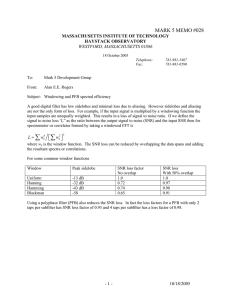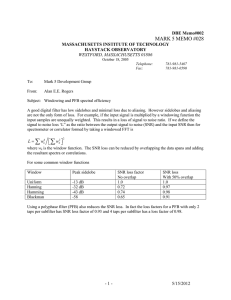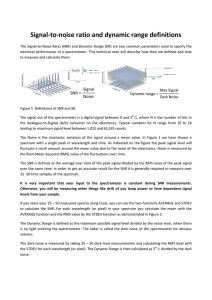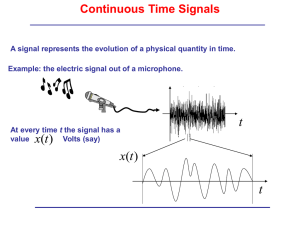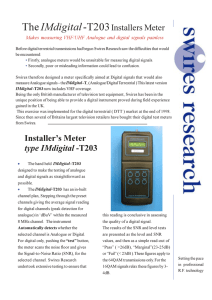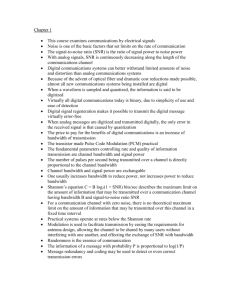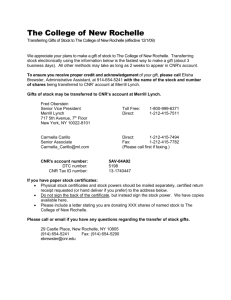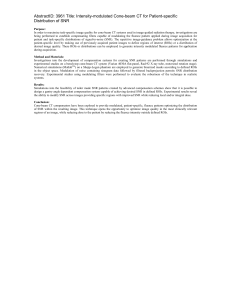Carrier-to-noise ratio
advertisement
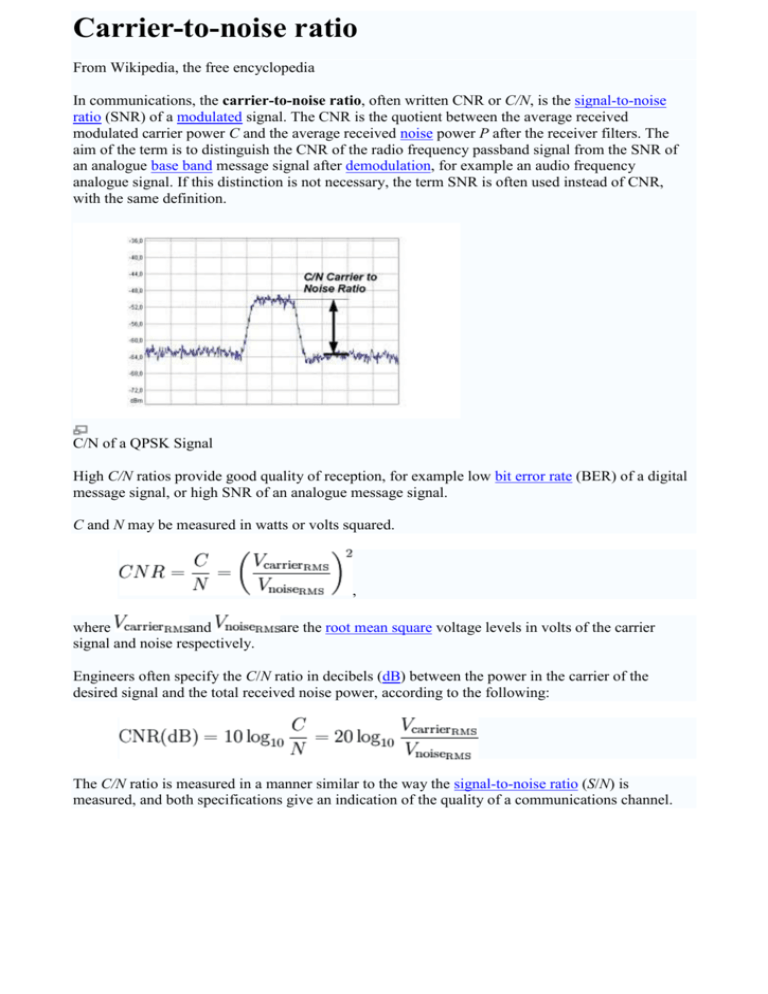
Carrier-to-noise ratio From Wikipedia, the free encyclopedia In communications, the carrier-to-noise ratio, often written CNR or C/N, is the signal-to-noise ratio (SNR) of a modulated signal. The CNR is the quotient between the average received modulated carrier power C and the average received noise power P after the receiver filters. The aim of the term is to distinguish the CNR of the radio frequency passband signal from the SNR of an analogue base band message signal after demodulation, for example an audio frequency analogue signal. If this distinction is not necessary, the term SNR is often used instead of CNR, with the same definition. C/N of a QPSK Signal High C/N ratios provide good quality of reception, for example low bit error rate (BER) of a digital message signal, or high SNR of an analogue message signal. C and N may be measured in watts or volts squared. , where and signal and noise respectively. are the root mean square voltage levels in volts of the carrier Engineers often specify the C/N ratio in decibels (dB) between the power in the carrier of the desired signal and the total received noise power, according to the following: The C/N ratio is measured in a manner similar to the way the signal-to-noise ratio (S/N) is measured, and both specifications give an indication of the quality of a communications channel.
